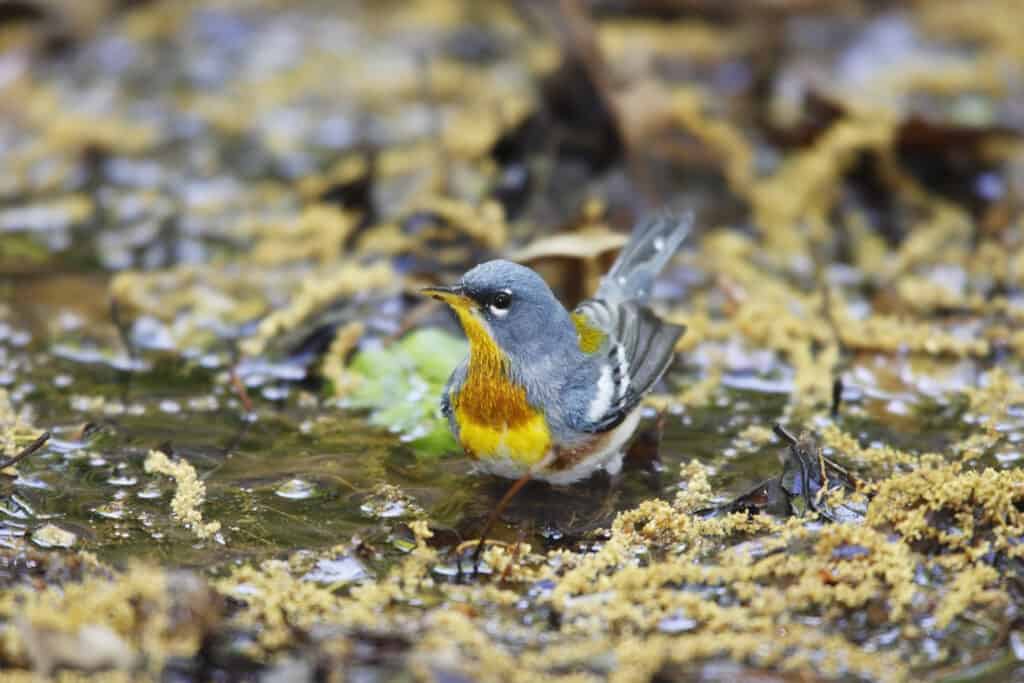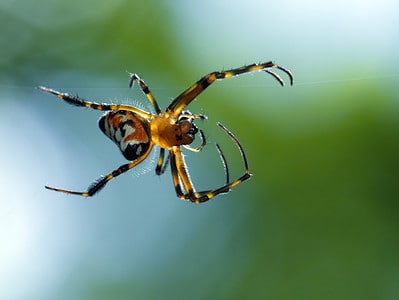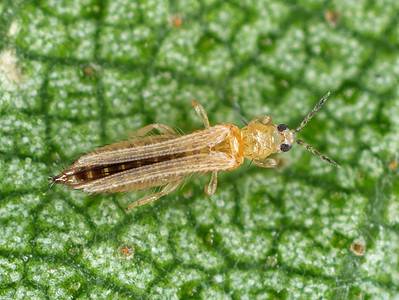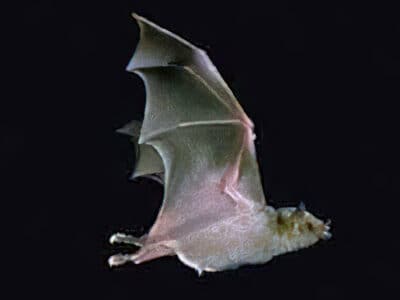Northern Parula
Setophaga Americana
They live in coffee and citrus plantations during the winter
Advertisement
Northern Parula Scientific Classification
- Kingdom
- Animalia
- Phylum
- Chordata
- Class
- Aves
- Order
- Passeriformes
- Family
- Parulidae
- Genus
- Setophaga
- Scientific Name
- Setophaga Americana
Read our Complete Guide to Classification of Animals.
Northern Parula Conservation Status
Northern Parula Facts
- Prey
- Spider and insects, including beetles, wasps, and ants.
- Name Of Young
- Chicks
- Group Behavior
- Flock
- Pair
- Fun Fact
- They live in coffee and citrus plantations during the winter
- Estimated Population Size
- 18 million
- Biggest Threat
- Habitat loss and climate change
- Most Distinctive Feature
- Bright yellow throats and chest
- Distinctive Feature
- Brown throat bands
- Wingspan
- 6.3 to 7.1 inches
- Incubation Period
- 12 to 14 days
- Habitat
- Mature forests with hanging canopy
- Predators
- Red squirrels, blue jays, and snakes
- Diet
- Insectivore
- Lifestyle
- Diurnal
- Favorite Food
- Caterpillars
- Type
- Bird
- Common Name
- Northern parula
- Number Of Species
- 33
- Location
- North America and South America
- Nesting Location
- end of a tree branch in clumps of Spanish moss
- Migratory
- 1
View all of the Northern Parula images!
“They flutter around the upper forest canopies.”
Summary
The northern parula is a small warbler that lives in forest canopies during summer and tropical plantations in the winter. They spend their days fluttering near the ends of branches, foraging for insects and berries. And you may hear them before you see them. Their trilling songs are unmistakable, but you will get a neckache from looking up. Learn all about these fascinating wood warblers, including their habitats, diet, and behavior.
5 Amazing Northern Parula Facts
- While both parents feed their young, the males take more responsibility in this role.
- Northern parulas prefer to flit about forest canopies during the breeding season.
- They are relatively solitary while breeding but will join mixed-species flocks during migration.
- They live in coffee and citrus plantations during the winter.
- They return to their breeding grounds much earlier than other birds.
Where to Find the Northern Parula
The northern parula lives in over 20 countries, including the United States, Mexico, Canada, the Bahamas, and Puerto Rico. It inhabits Canada and the United States during spring and summer, then migrates south to Mexico, Central America, and the West Indies during winter. Their breeding grounds are often mature forests with plenty of hanging canopy like Spanish moss and must be located close to a water source like a stream or swamp. Their wintering habitats are tropical and consist of coffee, cacao, and citrus plantations. However, they may inhabit fields, pastures, and woodlands. To find these birds, look to the canopies and listen for their trilling, buzzing singing.
Northern Parula Nest
Females build their nests on the end of a tree branch 100 feet above the ground. The nest is in clumps of hanging plant material like Spanish moss or lace lichen. They hollow out an area in these epiphytes, which line with animal hair, moss, grass, or pine needles. The nests measure three inches across and two inches deep.
Scientific Name
The northern parula’s scientific name is Setophaga Americana. Its family name Parulidae encompasses tiny, colorful wood warblers, and the Setophaga genus includes 33 wood-warbler species with unique feeding techniques. Setophaga is ancient Greek for “moth-eating.” The name Americana refers to this bird’s location.
Size, Appearance, & Behavior

They are relatively solitary while breeding but will join mixed-species flocks during migration.
©Stubblefield Photography/Shutterstock.com
The northern parula is a tiny, plump wood warbler about the size of a kinglet. These birds are smaller than a vireo, weighing 0.2 to 0.4 ounces with a 6.3 to 7.1-inch wingspan. They have short tails and pointy bills and average between 4.3 and 4.7 inches long. Adult males are a bluish-gray color with white wingbars. They have yellow and green necks, chests, and back patches with a brown band around their throat. Females and juveniles are paler (less vibrant) and lack the brown bands around their necks.
These birds enthusiastically flit and hop about the ends of tree branches in the upper forest canopies, singing their trilling notes during breeding. This species typically travels in pairs or alone during breeding. But they will join mixed-species flocks during migration and wintering.
Migration Pattern and Timing
Northern parulas are long-distant migrants. During the spring and summer, they inhabit the Southeastern regions of Canada and the United States. By fall, they migrate to Mexico, Central America, and the Caribbeans to stay in their winter habitats. These parulas return to their breeding grounds by early March and are typically already nesting when other birds make their way north.
Diet
The northern parula’s primary food source is insects, and they feed their young soft green larvae.
What Does the Northern Parula Eat?
They eat spiders and insects, but caterpillars are their favorite food sources. They also consume beetles, moths, wasps, ants, bees, locusts, flies, egg clusters, and others. During the winter, they may supplement their insect diet with berries, seeds, and nectar.
Predators, Threats, and Conservation Status
Due to its extensive range and significant population size, the IUCN lists the northern parula’s conservation status as LC, or “least concern.” However, this species faces threats as global warming increases. Spring heat waves can endanger young birds in their nests, and periods of heavy rainfall can flood nests and prevent parents from feeding their chicks. Urbanization is another potential threat to these birds, which can demolish their habitats.
What Eats the Northern Parula?
Their exact predators are not well-known, but they most likely fall victim to similar predators as most warblers. Their predators may include red squirrels, blue jays, and snakes. Parula young are particularly vulnerable to other animals, and parents may exhibit mobbing behavior when nest predators are nearby.
Reproduction, Young, and Molting
Northern parulas form monogamous pair bonds and return yearly to the same nesting site. Females build the nests, but males accompany, often singing his buzzy tunes. Females lay three to seven whitish eggs with brown markings, and the pair take turns incubating for 12 to 14 days. Both parents feed the young, but the males take over more in this role. The age at which their chicks fledge the nest and become independent is unknown. Their average lifespan is between four and five years, but they can live up to seven. They molt twice annually before and after summer.
Population
The global population for northern parulas is estimated to be 18 million mature individuals. This species is increasing, and short-term trends suggest their numbers have increased by 30% over the last decade. The IUCN states there are no extreme fluctuations or fragmentations in their population.
Up Next:
View all 65 animals that start with NNorthern Parula FAQs (Frequently Asked Questions)
Where can I find a northern parula?
To find the northern parula, look to the canopies of mature forests, with plenty of hanging vegetation like Spanish Moss. They inhabit Southeastern Canada and the United States during spring, summer, and early fall.
Do northern parulas migrate?
Northern parulas are long-distant migrants. During the spring and summer, they inhabit the Southeastern regions of Canada and the United States. By fall, they migrate to Mexico, Central America, and the Caribbeans to stay in their winter habitats.
Is the northern parula endangered?
Due to its extensive range and significant population size, the IUCN lists the northern parula’s conservation status as LC, or “least concern.”
How common is a northern parula?
There global population is 18 million and increasing. They have an extensive range that covers Canada, the United States, Mexico, Central America, and the West Indies.
What does northern parula eat?
They eat spiders and insects, but caterpillars are their favorite food sources. They also consume beetles, moths, wasps, ants, bees, locusts, flies, egg clusters, and others.
How big is a northern parula?
These birds are smaller than a vireo, weighing 0.2 to 0.4 ounces with a 6.3 to 7.1-inch wingspan. They have short tails and pointy bills and average between 4.3 and 4.7 inches long.
Where do northern parulas nest?
Females build their nests on the end of a tree branch 100 feet above the ground. The nest is in clumps of hanging plant material like Spanish moss or lace lichen.
Thank you for reading! Have some feedback for us? Contact the AZ Animals editorial team.
Sources
- Red List / BirdLife International , Available here: https://www.iucnredlist.org/species/22721639/138880067
- JSTOR / The Auk / Henry Mousley, Available here: https://www.jstor.org/stable/4074913#metadata_info_tab_contents
- Oxford Academy / The Auk / Ralph R. Moldenhauer, Available here: https://academic.oup.com/auk/article/109/2/215/5172869

















